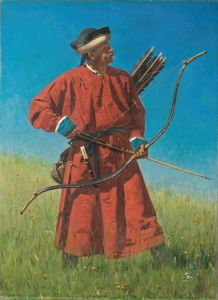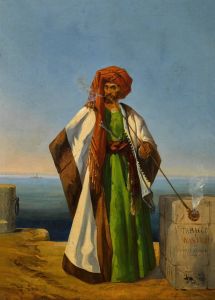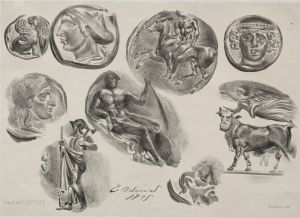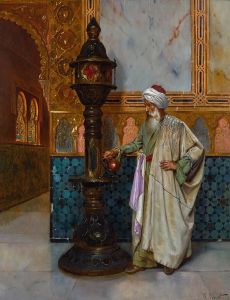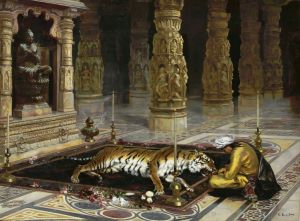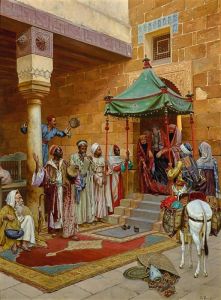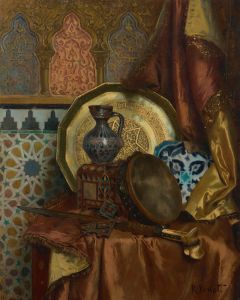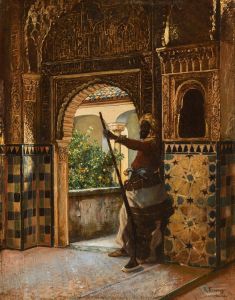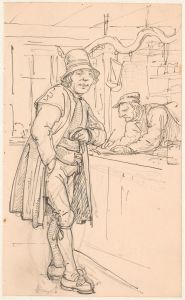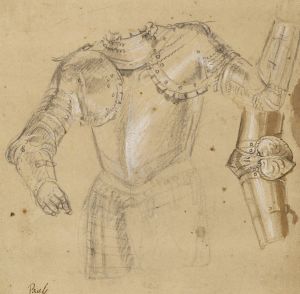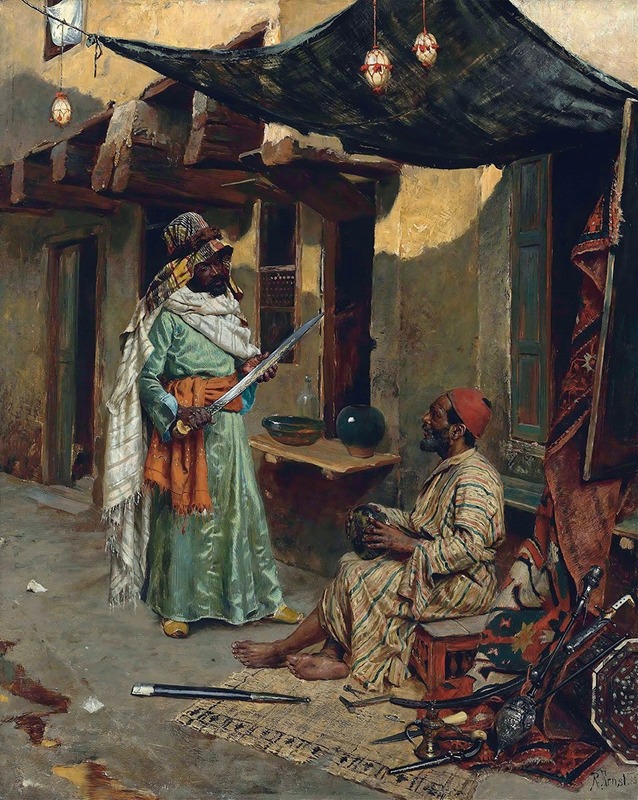
The Arms Merchant
A hand-painted replica of Rudolf Ernst’s masterpiece The Arms Merchant, meticulously crafted by professional artists to capture the true essence of the original. Each piece is created with museum-quality canvas and rare mineral pigments, carefully painted by experienced artists with delicate brushstrokes and rich, layered colors to perfectly recreate the texture of the original artwork. Unlike machine-printed reproductions, this hand-painted version brings the painting to life, infused with the artist’s emotions and skill in every stroke. Whether for personal collection or home decoration, it instantly elevates the artistic atmosphere of any space.
Rudolf Ernst was an Austrian painter born in Vienna in 1854, known for his Orientalist works that captured the imagination of 19th-century Europe. His paintings often depicted scenes from the Middle East and North Africa, reflecting the Western fascination with these regions during that era. Ernst's works are characterized by their meticulous attention to detail, vibrant colors, and an ability to convey the exotic allure of the Orient as perceived by Western audiences.
"The Arms Merchant" is one of Ernst's notable paintings, although specific details about this particular work are not extensively documented. Like many of his paintings, it likely features a scene that combines elements of daily life with the exotic and romanticized vision of the East. Ernst's works often include figures in traditional attire, intricate architectural details, and a rich palette that brings the scene to life.
Ernst was part of a broader movement of Orientalism in art, which included artists such as Jean-Léon Gérôme and Ludwig Deutsch. This movement was characterized by a Western interpretation and depiction of Eastern cultures, often romanticizing and idealizing them. While these works were popular and influential, they have also been critiqued for perpetuating stereotypes and presenting a Eurocentric view of Eastern societies.
Rudolf Ernst's artistic journey began at the Academy of Fine Arts in Vienna, where he studied before moving to Paris. In Paris, he became part of the vibrant art scene and was influenced by other Orientalist painters. His travels to Spain, Morocco, and Turkey provided him with firsthand experiences and inspiration for his works. Ernst's paintings were well-received during his lifetime, and he exhibited at the Paris Salon, which was a prestigious venue for artists of the time.
"The Arms Merchant," like many of Ernst's paintings, would have been appreciated for its technical skill and the way it captured the viewer's imagination. The painting likely depicts a scene involving the trade or display of arms, a common subject in Orientalist art, which often focused on themes of commerce, daily life, and the exotic aspects of Eastern cultures.
Ernst's works are now part of various private collections and museums, where they continue to be studied and appreciated for their artistic merit and historical context. His paintings offer insight into the 19th-century European perspective on the East and contribute to the broader understanding of Orientalism in art history.
While specific details about "The Arms Merchant" are limited, Rudolf Ernst's body of work remains significant for its contribution to the Orientalist movement and its reflection of the cultural exchanges and perceptions of his time.





